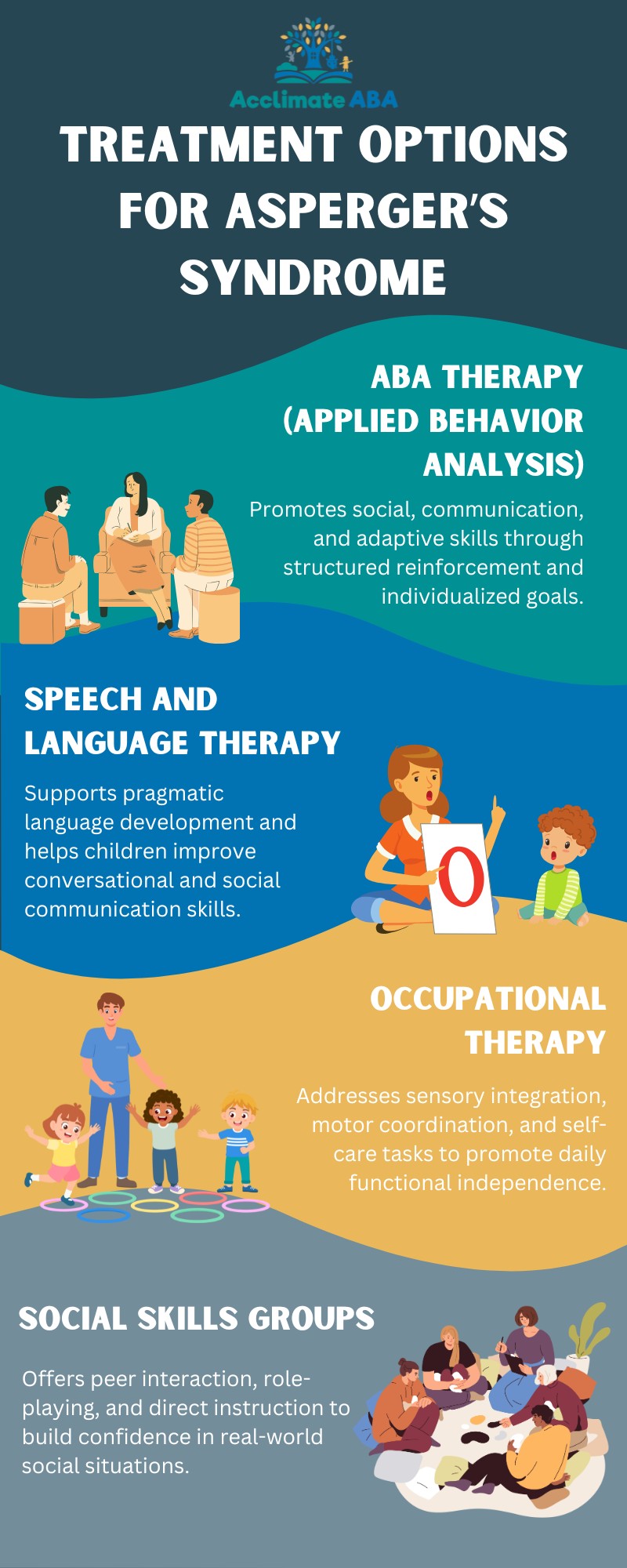Key Points:
- Asperger’s Syndrome is now diagnosed under Autism Spectrum Disorder but still has distinct patterns of behavior.
- Key symptoms include difficulty with social interaction, restricted interests, and sensory sensitivities.
- Early identification and supportive interventions, like ABA therapy, play a vital role in managing symptoms.
Many parents of autistic children often notice early behavioral traits that seem different from their peers and seek answers. While Asperger’s Syndrome is no longer a standalone diagnosis, the traits often associated with it fall under the umbrella of Autism Spectrum Disorder (ASD). Understanding these characteristics can be crucial in getting the right support.
According to the CDC, about 1 in 31 children in the U.S. is diagnosed with autism spectrum disorder. Many children previously diagnosed with Asperger’s display average or above-average intelligence, making early signs more nuanced. This article breaks down the hallmark signs, diagnostic process, and steps parents can take after noticing symptoms.
What Are the Symptoms of Asperger’s?
Children with Asperger’s often show difficulties with social communication, restricted interests, and unusual behaviors. These traits tend to become more noticeable around the age of 3 or later when social expectations increase.
Unlike other forms of autism, children with Asperger’s typically do not have delayed language or cognitive development. However, their communication may be one-sided or overly formal, and they may struggle with understanding others’ perspectives.
How Does Asperger’s Differ From Other Autism Diagnoses?
Though Asperger’s Syndrome is now categorized under ASD, the presentation is often milder and less impairing in early language and cognitive skills. This sometimes delays diagnosis.
Many individuals with Asperger’s are highly verbal and can engage in long conversations about their interests. However, they often miss nonverbal cues like facial expressions or tone of voice, leading to awkward social exchanges.
Social Signs of Asperger’s Syndrome
One of the clearest markers of Asperger’s is difficulty navigating social environments. Children may appear aloof or disinterested, but the root issue is often difficulty interpreting social rules. These social challenges can become more pronounced in school settings where social dynamics are more complex.
Examples of social signs in Asperger’s include:
1. Repetitive Behaviors and Focused Interests
Children with Asperger’s often display a deep, intense focus on specific topics. This isn’t casual curiosity but can become all-consuming. These special interests can be leveraged positively, but may interfere with social development or flexible thinking.
2. Sensory Sensitivities in Asperger’s
Many children on the spectrum experience sensory processing issues, and those with Asperger’s are no exception. They may overreact—or underreact—to sensory input. Sensory issues can impact daily routines, such as getting dressed, eating meals, or transitioning to new environments.
3. Emotional Regulation and Anxiety
Emotional control can be challenging for children with Asperger’s. They may have frequent meltdowns, particularly when routines change or expectations aren’t clear. Many also struggle with anxiety, especially in unfamiliar social situations or transitions. These emotional responses are not tantrums but rather signs of overwhelming stress or confusion.
4. Language and Communication Patterns
While children with Asperger’s usually have age-appropriate vocabularies, the way they communicate often stands out. These patterns can create barriers to effective communication and cause misunderstandings with peers.
5. Motor Skills and Coordination Issues
Gross and fine motor delays are sometimes overlooked in Asperger’s but can still be present. Children may appear clumsy or uncoordinated. Motor planning issues may also contribute to sensory challenges and affect confidence in group settings.
How Is Asperger’s Diagnosed?
Diagnosis usually involves a multi-step evaluation by a team of professionals, including developmental pediatricians, psychologists, and speech or occupational therapists. Below is an example of what the diagnostic process can look like:
1. Parent Interviews
Professionals begin by interviewing caregivers about early milestones, behaviors, language development, and social interactions to identify patterns consistent with Asperger’s or autism spectrum disorder.
2. Behavioral Observation
Clinicians observe the child’s play, communication, and social behavior during structured tasks. These sessions help identify restricted interests, repetitive behaviors, or atypical social responses.
3. Standardized Questionnaires
Tools like the ADOS-2 and ADI-R are used to assess communication, social skills, and repetitive behaviors against standardized criteria for autism-related conditions.
4. Ruling Out Other Developmental Conditions
Doctors rule out intellectual disability, anxiety disorders, or language impairments to ensure an accurate diagnosis based on all presenting symptoms.
5. Late or Delayed Diagnosis in High-Functioning Individuals
Because signs of Asperger’s can be masked or misinterpreted, especially in bright or verbal children, diagnosis may not occur until social demands increase.
Because symptoms can be subtle, especially in high-functioning individuals, diagnosis may be delayed until school-age years or even adolescence.
Co-Occurring Conditions in Asperger’s Syndrome
It’s common for children with Asperger’s to have additional diagnoses, which can complicate symptoms and support needs. Below are examples of frequent co-occurring conditions:
- ADHD (Attention Deficit Hyperactivity Disorder)
- Anxiety disorder
- Sensory Processing Disorder
- Learning disabilities
Recognizing these overlapping conditions helps in forming a complete support plan.
Support and Treatment Options for Asperger’s
While there is no cure for Asperger’s, various therapies and interventions can significantly improve quality of life and functioning. Treatment plans should be tailored to the child’s specific needs and strengths.
Common approaches include:
When to Seek a Professional Evaluation
Parents should consider seeking a professional evaluation if their child shows consistent challenges in communication, social interaction, or behavior that differ from typical developmental patterns. Signs may include difficulty with eye contact, repetitive behaviors, delayed language, or heightened reactions to sensory input.
Early identification is critical, as it allows families to access supports and interventions that can significantly improve outcomes. If a pediatrician expresses concerns or a caregiver notices persistent developmental differences, it’s important to request a referral to a specialist.
Developmental pediatricians, psychologists, or neurologists can conduct formal assessments. Trusting your instincts and acting early ensures your child receives the support they need during key stages of growth and learning.
Create Steady Progress With ABA Therapy
If your child shows signs of Asperger’s or struggles with social interaction, communication, or sensory issues, ABA therapy can be an effective intervention. Acclimate ABA offers personalized ABA therapy in Utah, helping children develop critical life skills and improve overall independence.
Contact us today to learn how ABA therapy can help your child thrive and confidently navigate the world around them.



